Buying Land in Eastern Washington

As of this writing, the prices on property throughout the state are going bonkers. In 2016-2017 one could buy ten acres between Monroe and Sultan, or
near Mount Rainier for $50-$100k. Or a house in Cle Elum for $80k. It is 2019, and the prices doubled, tripled, and quadrupled. So for those of us who
like to play with land, there was little choice but to look farther - often much farther east.
Still, farther out, the deals still exist - the land can be had for under $1000 per acre - but you have to go to the outer reaches of Okanogan
County to get these prices. As of this writing, in Methow Valley it is still possible to buy an OK house on 5 acres for under $200k, though
these are now becoming very rare and don't last for long.
Here are a few observations on buying land in Eastern Washington that may be helpful.
When to look
Because of harsh winter, the real estate season in Eastern Washington is generally Spring to Fall - many people take unsold properties off
market for the winter to relist them next year. So the best time to shop - the time when most properties are available - is outside the snow period.
This is not to say that the market shuts down completely, but it is a great deal less active.
Prices
The market here is much less active than in Seattle, so market prices are more difficuly to establish. I have seen properties in Methow Valley that
sit on the market for many years. Some owners take them down for a winter and then relist in spring - year after year. Some don't bother doing that
and the listing on Zillow accumulates hundreds of days of activity.
Zillow price history tab is your friend here - it shows how many times a property was relisted, and what it was bough for by the current owners.
a tax assessor database for the respective county sometimes has more data than Zillow, and so does Redfin. Neither
Zillow nor tax appraisals are indicative of a market value, however - the ultimate sale and a professional appraisals are.
If the sale is not cash, the appraisal ordered by a bank will be the final arbiter of the price. Real estate agents generally have a nose for it
as well. In my last transaction, my (buyer's) agent told me exactly what to offer, the sellers countered with a slightly higher price, and the
appraisal came through just slightly below the purchase price.
Where to look
I am more familiar with Okanogan County, but have also lazily tracked markets around Cle Elum and Leavenworth (my wife and I call it The Wurst).
Both Cle Elum and Leavenworth has become ridiculously expensive in the last 3-4 years - owing, no doubt, to relative proximity to Seattle. In 2016-2017
you could buy a home on a small - an acre or two - parcel for $80k-$120k. The prices now jumped to $300-$400k for the same type of properties.
In Northern and Northeastern Okanogan, Ferry, and Douglas Counties the places to look at right now are Aeneas Valley, Tonasket, Colville, Oroville,
and Republic. They can be as far as 5 hours' drive from Seattle, but large parcels are still available there for relatively little money, some
land tracts for as little as $600 per acre (as of end of 2019).
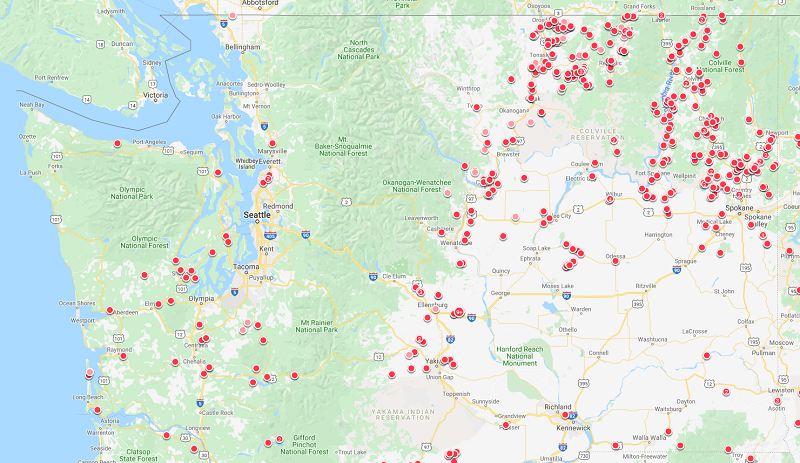
(10 acres or more for 200k or less, with or without a house)
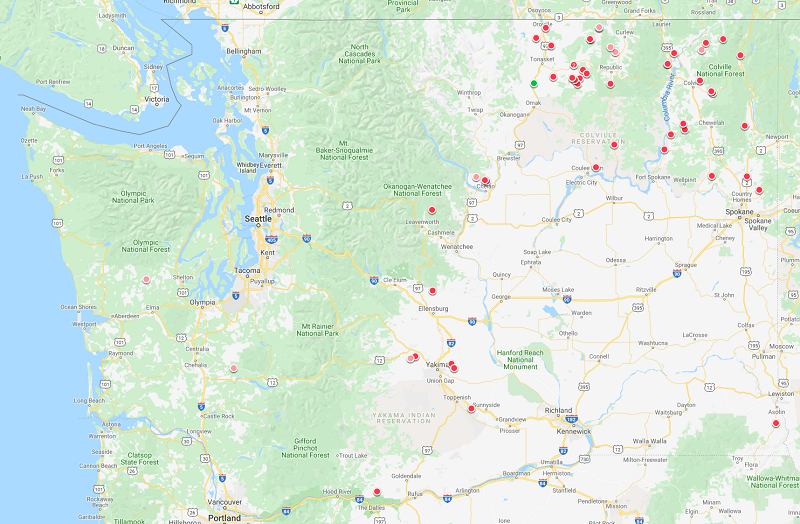
(10 acres or more for 200k or less, with a house)
Buy land, build later?
Buying an existing structure is ALWAYS considerably cheaper than building. I don't know of a single exception from this rule. Often it is not just
the cost - though the cost is often the same or even higher than Seattle. It is also availability of the workforce. You can ALWAYS get a plumber
in or around Seattle, for example. in Methow Valley? You could have to wait for a few days, or a few weeks, or a couple of seasons - depending
on the size of the job. I am trying to find an electrician right now to install a couple of backup generators. It's been two months, and it looks
like I will have to wait for a few months more.
So unless you are willing and able to do the work yourself (which may be the whole point of buying the place!), do not expect to save by
buying land and building later.
Access
Depending on how you plan to use the land, how it is accessed may matter a lot. Many - most? - land plots in Eastern Washington are accessible
only by a private road, which is up to owners to maintain. If yours is a mile away from county-plowed road, and you plan to visit in winter,
you will need to figure out how to get there. A good four wheel drive car with clearance can handle a few inches to about a foot of
fresh snow on level terrain, but not much more than that. Things get a lot worse very quickly if hills are in the way.
A medium-sized tractor can make snow removal very easy, but that's $40-50k. Snowmobiles or tracked ATVs can go almost anywhere, but - same as with
a tractor - there is a question of storing them. Many land plots are accessible by unmaintained roads going through someone else's property - so
the land at the head of the road where you would want to store snow equipment usually does not belong to you.
Even if you have snow equipment to get to the place, parking the car at the head of the driveway is often not possible - the roads are usually plowed
enough to get through, but the shoulders have all the snow that got pushed off the road, so there's no parking there.
There are a couple of lakeside properties accessible through a private road going through my land. In winter my wife and I are the only people
who can get there - on a tracked ATV or a snowmobile.
For reasons of accessibility many land plots in Eastern Washington are not suitable for permanent habitation - and this may affect practicality
of building a home or a cabin there.
Your vehicle
A variation on the access theme is the cars you have and/or planning to buy.
Buying a weekend house in Eastern WA requires A LOT of driving. Quite often, in inclement weather. A four-wheel drive vehicle is more or less
a requirement in winter, where roads across the passes and towards your house are packed snow. A newer car with a good traction control
system and winter tires is a must for another reason - deer. In Eastern WA, deer are not Bambi-like cuddly creatures. They are suicidal
maniacs bent on killing you and destroying your car by jumping in front of it when it's snowing heavily.
An ideal car for Eastern Washington adventure should: (a) stay on the road and stop quickly if required in snow, (b) be able to
tow a substantial trailer (you will need it to get your agfricultural machinery serviced), (c) have reasonable fuel economy, (d) have
excellent reliability, and (e) have reasonable creature comforts because you will be spending a lot of time inside it.
These requirements are quite conflicting. We will cover an ideal car choice (or lack thereof) in a future write-up. But for the moment,
if you plan to maintain a vacation home in winter in Eastern WA, and all you have is a 2WD sedan, you have to budget for another
vehicle.
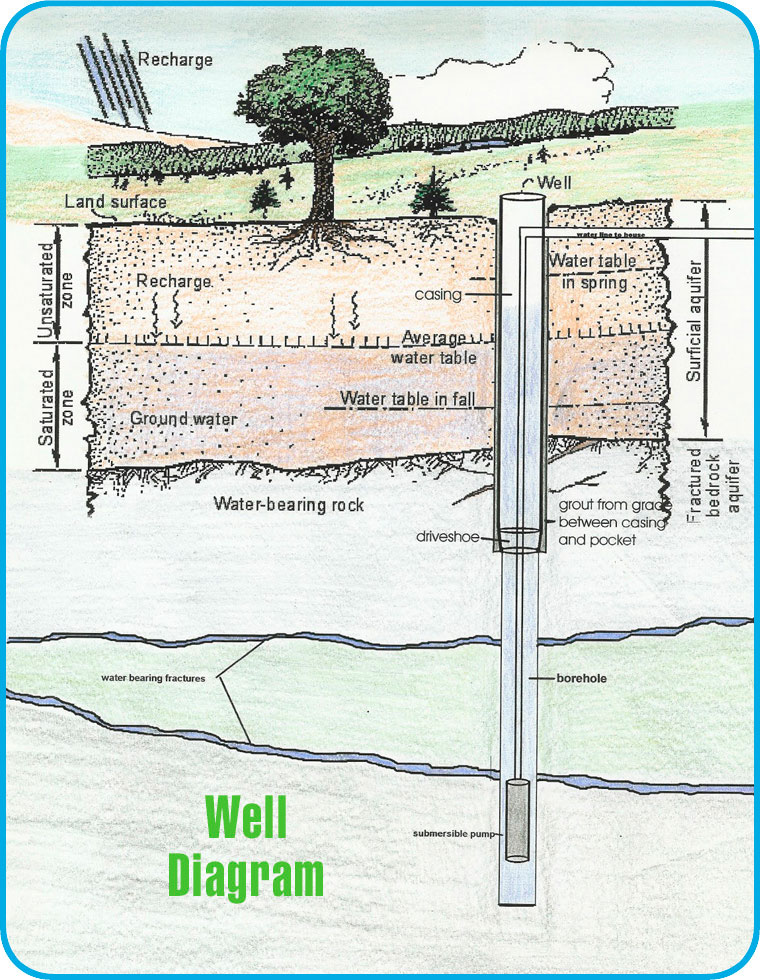
Essential systems - household water
If you plan to live on the land for any period of time, there are two essential system you will need - household water and septic. These should not be
taken for granted and should be investigated upfront.
In most cases out of in the country you will have a private household water well. The easiest thing is to buy a property where it is already drilled.
Otherwise feasibility should be investigated prior to purchase. There are places - for example, so called "closed basins" - where new wells are either
not permitted at all, or are required to be extremely deep - hundreds of feet - to not disrupt the surface water flow.
Household wells are typically dozens to hundreds of feet deep, and are called "deep wells". The depth is required to filter away bacteria.
Agricultural wells are usually much more shallow - so called "shallow wells" - because being completely free from bacteria is not required
for irrigation or watering livestock.
If you are buying a property with an existing deep water well, it is absolutely essential that it is tested for bacterial and chemical contaminants.
If the property has been used in the past as agricultural land, a cache of fertilizer could have leached into the ground causing unacceptable
levels of nitrates in the well water. A well company can handle water testing for you. Because well companies are incredibly busy in summer,
you want to schedule the test well in advance, and make sure that the inspection period on your sales agreement allows for sufficient buffer.
There are many land plots where there is simply no water at all. They cannot be used for anything other than recreation land - camping or hunting.
Talking to the neigbors about local drilling companies and then calling drilling companies and asking the ones who recently drilled wells near the
property should clear the question of water table and regulatory requirements.
Water flow from the well - how many gallons per minutes it can produce in a sustained way - is very important. Water from a household well can be used
to irrigate up to half an acre of garden or a lawn (or both, combined). A single impact sprinkler uses 4-5 gallons of water a minute. A typical household
well produces 5-15 gallons per minute (GPM), and usually closer to 5 than to 15, so on average it can feed only 3 sprinklers if no one else uses water in
the house. Irrigating pasture out of such a well is impossible. A powerful irrigation well could produce 200 gallons per minute.
A well company can perform the flow test for you. It is wise to do it before buying the land, so you know its limitations. Also see below for water
rights. Even if water is available, it might not be legal to use it for argicultural purposes.
Essential systems - sewage
There is no sewer out in the country, and individual septic systems are used to treat and discharge sewage. These consist of a septic tank where
bacteria breaks down sewage, and drain field where the cleaned water from the septic tank goes back into the ground.
For septic system to be possible, there should be an available field where water can percolate back into the soil. Some land plots may not
have appropriate soil capable of filtering sewage, or water table too high to ensure that the water can filter the contaminants out before
mixing with ground water. A percolation ("perc") test is performed before septic is constructed - as well as
during home inspection time - by a septic company. Usually, if there is an existing home, proving that the septic works is on seller,
but if you are buying a vacant land where you have future plans to build, you should write perc test contingency into the Purchase and
Sale Agreement.
A land plot without feasible septic installation is just recreational land. It can never hold a structure designed for long-term habitation.
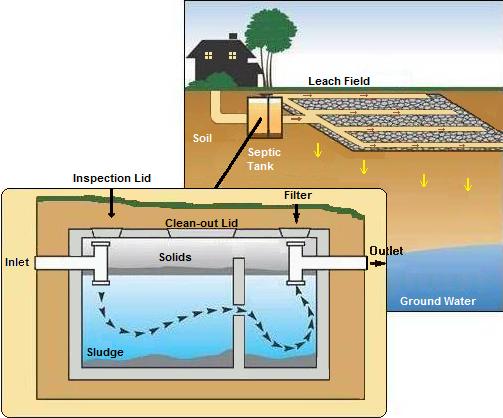
Electricity
Thanks to recent advances in renewable energy, life without electric utility may be difficult, but possible. Solar panels can
provide enough power for things like lighting and fans, automatic standby generator can run the water pump, and propane can be used
for heating.
If you do really plan to build an off-grid house, I would recommend reviewing the land characteristics with professionals who
specialize in this sort of thing, especially if the house would be used in winter.
For example, if water pump runs on a generator or solar (the later is only possible in summer), it cannot have a fraction of
a minute duty cycle the way normal water pumps function. Generators don't turn on or off very fast, and solar is not powerful
enough to move water quickly. More likely you will end up with a large cystern of water buried below the frost line - but above
the house - supplying the water to the house using gravity flow. Of course, for system such as this to work, sufficient slope
has to be available.
In Eastern Washington it snows heavily in winter. Solar panels need to be clear from snow to produce power. As such, typical
roof-top installations you see in warner climates are completely impractical.
If electric service is available, and you are buying a house, consider what happens if the power is interrupted. No utility is
100% reliable, and service disruptions do occur. If this happens in winter and there are no backup heat sources, the water lines will
freeze and burst, flooding the house once the heat is restored.
Families who live in Eastern Washington full time often rely on wood burning stoves for backup heat. However, if this is
a second house and the owners do not live there full time, this option may not be available. For someone who lives in
a house part-time, a propane-fueled standby backup generator (~$10k typically with installation), and a propane gas stove
(~$5k installed) is, in my opinion, a requirement. If you are buying an existing house without such backup heat, budgeting
for these items upfront would be very wise.
Internet
Now, this is ridiculous, right? We're talking about refuge in the wilderness, a cabin in the woods, and you want...internet?
Isn't leaving the entrapments of civilization behind the whole point of leaving the city for this new adventure?
Whether the internet and/or cell connectivity is essential or not depends on your use of the place. If you are looking for a camping
or hunting land, and you won't have any structures on the ground, this is fine. If you will have a primitive structure containing
nothing of value, it is probably fine was well.
But if you are planning to have a proper house that is functional during the winter, and you do not plan to always stay there,
having connectivity is essential. You will want to know if there is a power interruption or if heater broke and temperatures
are dropping towards the freezing point, for example.
You may want to have a security system to make sure that no one broken into the house. A few cameras that would let you
check on the property now and then.
For many people who live in cities telecommuting is available as an option. Most software engineers are in this group. So
you may want to dial in from your vacation place around holidays.
None of that is available without good internet access.
In many places in Eastern WA internet access is a problem. Many houses do not have connectivity at all, and in some cases an ISP
would eliminate the circuits once the property was sold and previous owners' account was closed - this happened to us. Previous
owners had access through CenturyLink, and once they were out CenturyLink refused to reconnect us.
For a while, we tried to use satellite through Hughes. We very quickly discovered that most modern internet user scenarios - at
least the ones we were interested in - simply do not work on Hughes network.
This is the limitation of the media - the roundtrip of the signal to the geostationary orbit and back to earth results in roughly
1 second latencies, half of it being simply speed of light (35000km * 2 * 2 for a ping / 300000 km/s). For many devices connection
setup times out before it can be established.
Most cameras we tried did not work at all - Arlo was one exception. RDP was out of the question. Even reading email was impossible.
Netflix did work quite well though.
We had an option to pull the fiber line from the closest available access point, for $11000. But in the end we bought a piece of land bordering
ours from where there was a direct line of sight for wireless microwave uplink, and established relay connectivity from there.
So if you are buying a house or planning to build, investigate connectivity upfront.
Sunshine and shade
If it wasn't clear from the previous parts of my post, Eastern Washington has harsh continental climate. It is extremely hot in summer -
temperatures during the day can easily be between 100F and 110F. In winter the temperatures can go well below zero. Zero Fahrenheit.
How the property is located relative to natural shade is super important.
For example, our farm is located in the valley of sorts. Our house is on the sunny side year around, but neighbors are against a steep
hill, and in winter their house is in almost permanent shade. Daytime temperatures differ by 10-15F, and snow stays for an extra month
after it's mostly melted on our land. They have to have their wood stove going all the time to compensate for the winter cold. If they
weren't, I can't quite imagine the power bill.
This Spring the snow was entirely gone from our land by nid-March - but it stayed on our neighbor's property until mid-April.
On the other hand the sun rises quite high in summer, so both places are approximately equally hot when it's hot. The shade that
matters during the summer comes from trees, not hills.

(November afternoon at our place)
Agricultural water rights
Water rights are a big deal if you plan to use the land for anything other than a small garden.
It gets really hot around here. Eastern Washington in classified as a desert. It may not rain - not a single drop - between April and October. It did not for the
first 2 years we've been here. So if you want to have a pasture for the animals, or a hay field, or any crop other than dryland crops such as rye or wheat - that
has to be irrigated. Otherwise the land dries out by end of June and all you have on it is sagebrush.
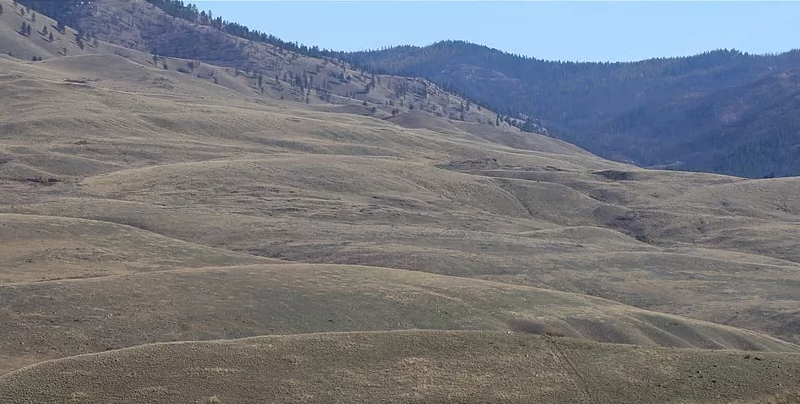
(Unirrigated land in summer)
Irrigation requires water rights. Water rights go with the land, and have nothing to do with availability of water - just the use. You may have no access to
water on your plot, but if you have water rights, you can pipe it from somewhere else. Or even truck it in (not that anyone would actually do it, but it is technically
allowed). If you have a creek flowing through your property, but no water rights, you cannot touch that water.
Water rights come with the property, and must be pre-existing. All water was parceled out by 1940s, and since then no new water rights applications were approved.
Water rights disappear if they are not used. If the property has not been irrigated for 5 years or more, they simply go away (and then someone's application
from 1943 gets approved. If you are buying land, this is one of the standard questions on the Seller's Disclosure Form - pay attention to what it says.
Water rights have seniority. In case of water shortage the claim with the earliest date wins. The system was started in WA in 1890s, so the most senior water
rights are from that decade.
You can research water rights on Department of Ecology website. The easiest
way is to get the parcel number from the County Assessor's web site, and then paste it into the search box in
Water Explorer. You can (and probably should) hire a water rights consultant
to help you evaluate the property from the water rights perspective. They can research adjudication (whether the rights were challenged and stood in court) and various
disputes. This evaluation should cost between $1000 and $1500.
In conclusion...
As you can see, hunting for land in Eastern Washington can be a fun, but rather involved affair. It requires planning and quite a bit of knowledge.
Hopefully this write-up can serve as a starting poing for your research.